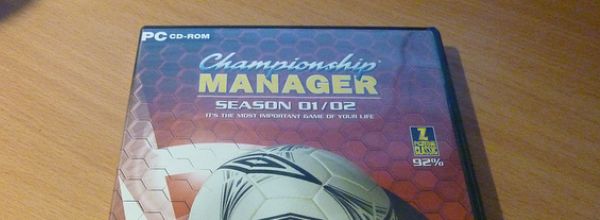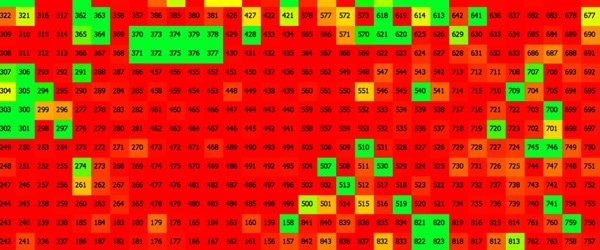Do you frequently spend 20 minutes just trying to figure out which samples you need to take out of the freezer, or trying to find space to put new samples in? Do you have a fridge full of petri dishes and don’t know which ones to throw away? Or maybe you get semi-regular emails from members of your lab asking something like, “Where are X samples? They should be on shelf Y of freezer Z, but I can’t find them?” If you answered yes to any or all of these questions, then you need to tidy up your lab.
WARNING: Students should undertake lab tidy-ups at their own risk. Don’t throw away anything that other people need. If you are not sure, always ask your PI or a senior member first.
Why Should You Keep Your Lab Tidy?
Health and Safety Reasons
I know you just rolled your eyes. But since your actions in the lab can have a big impact on others, it’s best to keep things in order. At home, an overflowing cupboard just means your clothes fall out when you open the door, but in the lab, it could have much more serious consequences.
It Will Save Yourself and Others From Future Stress!
If you’re finishing up in your current lab and moving on to a new position, you might think you’ll never have to worry about those troublesome RNA samples again. But I can almost guarantee that at some point you will get an email from your advisor or another lab member asking where those samples are – especially if you never labeled them accurately and didn’t put them in a place that makes sense.
Efficiency
When you know precisely where your samples and reagents are, you can save time during day-to-day experiments in searching for samples, and you can also easily direct others to them without having to show them in person. At some point, all of us have sighed with frustration and said ‘I’ll just come to the lab and show you” because it was too difficult to explain where something was.
How to Get Started
Teamwork
If your shared lab looks like a disaster zone, maybe it’s a good idea to have a scheduled clean-up where everyone is involved. This will take less time and might even be fun.
Put on music while you’re cleaning, order pizza afterward, go out for drinks – it doesn’t have to be a total chore, or, if it is, you can at least have a reward at the end.
Get It All Out
You heard me, get everything out of the cupboard and off the bench. Tear off that disgusting bench cover that’s been taped on there since 2016 (and hasn’t been white since 2017). Now spray the whole bench down with ethanol, and when it’s starting to look like a promotional picture for Theranos, you can start putting stuff back on it again. But don’t just put everything back, look carefully at each object, buffer or instrument and really ask yourself, “Does this need to be here? Do I use it on a daily basis?” If the answer is no, if the buffer is out of date, or if the instrument is broken, DO NOT put it back on the bench. Throw it away, get it fixed, or put it somewhere for long-term storage.
In a similar vein, don’t keep a box each of every possible size pipet tip on your bench if you don’t use them all regularly. Instead, keep the ones you use daily on the bench and keep the others in a cupboard or drawer close by instead. A good rule of thumb is to keep the items you use daily closest to your workspace, and less frequently used items or equipment in drawers or cupboards. But if there are things you never use, should they even be in the lab at all? You can also
take a Marie Kondo approach if that works for you.
Have a Place for Everything
It’s much easier to know where something is if you have a dedicated space for it. If you’re always struggling to find a magnetic stirrer when you’re making buffers, maybe keep a selection of them in an empty pipet tip box in the area where you usually make the buffers. This way, they won’t end up in random drawers or someone else’s bench.
Have dedicated shelves, drawers or boxes for buffers and reagents that are stored at room temperature, and ones that need to be kept cold in the fridge or freezer. Have a separate drawer/box in the freezer for antibiotics, one for restriction enzymes and other cloning reagents, one for your PCR reagents, one for your primers, and so on. Label each box or drawer clearly so that it’s easy to find everything at a glance.
Drawers are often messy, so get a utensil holder with lots of compartments to make things easier.
How to Label Your Lab Materials
Be Thorough
Always logically label your samples with all the essential information. For example, is the sample a treatment or a control? What is the species? What date did you make/collect/extract the sample? What is it – DNA, RNA, protein, or a buffer? What is the concentration? If it’s a solution, for example, 70% ethanol, did you use molecular grade or DEPC-treated water to dilute it, or only deionized water?
Shared vs. Personal Reagents
If you have a lot of shared buffers in your lab, be sure to label them clearly; don’t use some kind of weird code that only makes sense to you, ambiguous names or uncommon abbreviations. And of course, if you don’t want to share it, write your name or initials on the sample – I once got annoyed with a colleague for borrowing a solution I had left on the bench, but then I realized I never even wrote my name on it (Sorry for being passive-aggressive, Mikey).
Label Them Appropriately (And Use the Right Pen)
Labels are more important than you might think. If you don’t label samples accurately, it can lead to confusion, errors in processing, and incorrect data being published. Use stickers/colored tape/tubes of various colors to make it easier to distinguish between treatment vs. control samples, or for different varieties of antibiotics. If you need to spray the tubes down with ethanol at any point in the future, make sure you use an ethanol-proof marker to label them!
Also, check that your tape or markers are appropriate for the temperature or environment you are storing the samples. For example, as I learned the hard way, a green pen should not be used to label things for long-term storage (especially on yellow tape! It can fade and become almost impossible to read). Not sure what pen to use? Read more about
different options for pens. Labels on samples for long-term storage often get damaged or faded, so try to replace them regularly. If you have the funds, you could even consider buying a fancy label printer.
Storage and Disposal
Check the Use-By Date
Generally speaking,
biological materials don’t have a very long shelf-life, so checking the dates for everything regularly means you have no excuse for keeping useless reagents. You could even make a schedule for this to prevent you from having to do a big clear-out later on.
Make sure you use the last of one reagent or kit before you open a new one, and if you have multiple tubes of a reagent, mark which one has been opened so that you don’t end up with half a dozen almost-empty tubes. If stocks are getting low, order more before you run out.
Storage Know-How
It’s a good idea to investigate the best practice for the storage of various samples and reagents you have. For example, many buffers (e.g., for in-situ hybridization or similar) need to be made fresh on the day of use, so you should throw them away immediately after you’ve finished your experiments to avoid unnecessary clutter. Others can keep for days, weeks, or months depending on the temperature you store them. Agar plates should be stored at 4°C, but are only usable for a relatively short amount of time – around 3 months. It’s also important to check for the stability of the antibiotic you have in your plates, because many will
only remain active for a few weeks. If plates aren’t stored correctly, they can either dry out, or fill with liquid, either of which renders them useless.
Generally, it’s best to keep nucleic acids at -80°C for long-term storage. However, there are several variables to consider when storing nucleic acids:
- RNA will degrade faster than DNA.
- Linear DNA is not as stable as circular (plasmid) DNA.
- Long-term quality of nucleic acids can be affected by the methods with which the sample was initially extracted.
If you’re unsure of how long things should be stored, there are many useful resources online to help you find out, like this
quick guide on storing reagents. Also, ThermoFisher has a helpful guide on
storage of bacterial samples.
Throw out What You Don’t Need
If you haven’t used it in 6 months (or even less time than that), find it a new home … possibly in the bin. Incidentally, this will be much easier if you label everything with names and dates!
It’s also important to know how to dispose of things safely and appropriately. Commercial reagents often have instructions for disposal on the label or more information on their website. Chances are your institution has a training program or document for how to handle lab waste. If you’re not sure, your lab manager or technician can probably point you in the right direction.
Once you’ve thrown away what you don’t need and stored everything appropriately, you’ll most likely end up reducing waste in the long-run because it will be much easier to keep track of what you have and what you need. It might even help you save some of that precious grant money.
Be Generous With Your Junk!
Just because you’re never going to use those 12-well plates that have been sitting in the cupboard for years, doesn’t mean no-one else will use them! If you’re thinking about throwing something away or putting it in the basement where it will never see the light of day, first send an email to your unit/department and ask if anyone needs them. You can also consider donating to
The Reagent Project, which aims to assist scientists with limited funding.
You Don’t Have to Do It All at Once
If a complete decluttering session where you throw away half of the lab fridge evokes a feeling of terror for you, don’t worry – it doesn’t have to happen overnight. Instead, start with small goals. Clean out one shelf/cupboard/drawer/fridge per week or month. You’ll get there eventually.
It’s weirdly satisfying having a tidy lab, and once you’ve done a complete overhaul, it’s challenging to go back to a cluttered working environment. Want to learn more about streamlining, decluttering, and generally making your lab life easier? Read these
tips for organizing your lab book, ideas on how to
reduce lab waste, and this
guide to a happy lab. Do you have any tips for how to keep things running smoothly in the lab? Comment below!
Bec is a molecular biologist and science writer/communicator with a Ph.D. in molecular biology. Based in Australia, she writes predominantly about CRISPR and other genome engineering technologies. She also does public speaking and lectures, and is passionate about making science more accessible.







